Is your best buddy wetting the bed? While it’s not uncommon for dogs to have occasional accidents (especially throughout the puppy house training process), dogs peeing while they sleep is a bit of an unusual issue that calls for some investigation.
This issue can be alarming and frustrating, but luckily it can usually be tackled by dealing with the underlying issue triggering the incontinence. We’ll explain some of the most common reasons dogs pee in their sleep and share some strategies for stopping the problem below.
Why is My Dog Peeing in Her Sleep: Key Takeaways
- Dogs may pee in their sleep for a variety of reasons. In some cases, it will simply be the result of poor housetraining or an overly full bladder, but it can also be indicative of a health issue.
- A few of the most common health issues that cause incontinence include UTIs, spine injuries, and diabetes. However, you’ll likely need your vet’s help to identify and address the problem.
- No matter the cause of your dog’s nocturnal urination, you can use management solutions to help make cleanup easier. For example, you may want to purchase a waterproof dog bed or a slip-on cover.
Urinary Incontinence in Dogs: Uncontrollable Urination
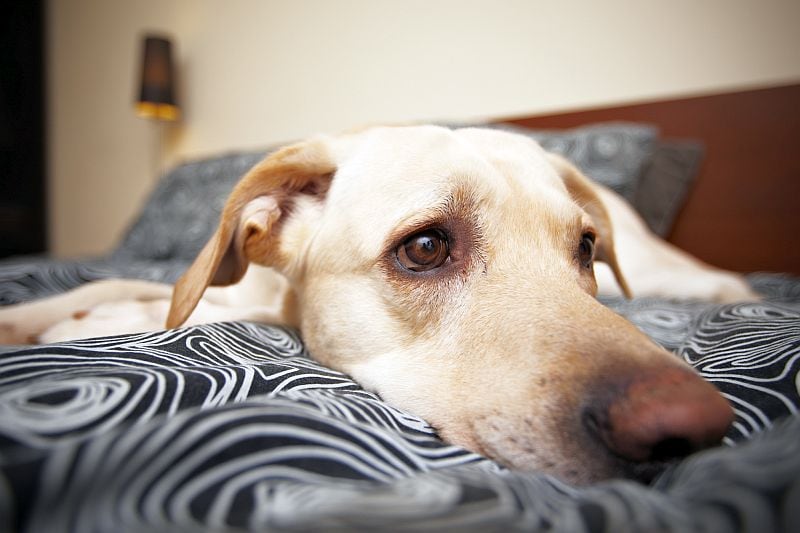
Dogs who pee in their sleep are exhibiting urinary incontinence — a condition in which dogs are unable to control their bladder.
In some cases, dogs may not even be aware that they’re peeing. Your pooch might sleep right through the leakage and continue to relax throughout the episode.
Urinary incontinence can occur in any dog, but it’s most common in middle-aged female dogs. This is because the female hormone estrogen strengthens the muscles that help with bladder control. Spayed females have fewer of these hormones, which can lead to involuntary elimination.
Incontinence is much rarer in male dogs, though neutered males — like spayed females — are more likely to develop incontinence than their intact counterparts are.
Dog Peeing in Her Sleep? Go Ahead and Call Your Vet.
If your dog is exhibiting any signs of incontinence, it’s time to call your veterinarian.
Even if the accidents are pretty rare and only result in a small amount of urine, incontinence may be caused by urinary tract infections or other painful conditions. So, it’s important to nip them in the bud.
We’re going to dive into some of the most common causes for this issue below, but you’ll find that almost all require the assistance of your veterinarian.
Another reason it’s important to consult your vet is that incontinence can also be symptomatic of a more serious issue.
In any case, your veterinarian will be able to provide you with personalized advice so that you can get to the bottom of this pooch predicament.
The Top 11 Medical Reasons Your Dog Is Peeing in Her Sleep (in No Particular Order)
Here are some of the most common reasons why your dog may be peeing in her sleep. Don’t forget that the only true way to determine what’s causing your canine’s incontinence is seeking out veterinary care.
1. Urinary Tract Infections
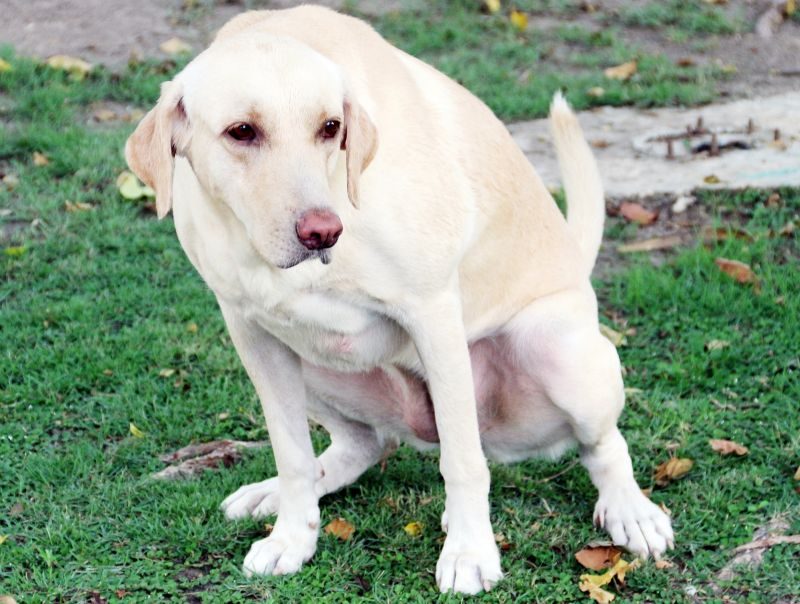
The Problem: One of the more common reasons why your furry friend may be peeing in her sleep is a urinary tract infection or UTI. This painful condition can cause our furry friends to urinate more frequently, and may make the process of urination very painful. In addition, the inflammation associated with a urinary tract infection may make it difficult for your pooch to notice that she is peeing while asleep.
Other signs of a urinary tract infection include strong-smelling urine, dripping urine, blood in the urine, or frequent licking of the genital area. You might also notice your dog drinking water more frequently.
Possible Treatments: Your vet will likely order a urinalysis to verify that your dog is suffering from a UTI. Your veterinarian may also ask for urine culture and sensitivity test, since UTIs can be caused by several different types of bacteria. The culture will help determine what type of antibiotic makes the most sense for your mutt. Additional medication may be prescribed to help her cope with the associated pain.
After your dog runs her course of antibiotics, her urine will be rechecked to ensure that the infection has fully cleared.
2. Hormonal Imbalances
The Problem: Some dogs might have a hormonal imbalance due to conditions like hypothyroidism, which can affect your dog’s ability to control her bladder. You might also notice changes in your dog’s appetite, weight, or energy if she’s struggling with hormonal imbalances.
Possible Treatments: Your dog will need to undergo a series of blood tests to verify that she’s dealing with a hormonal imbalance and determine its root cause. From there, your veterinarian may prescribe a hormone replacement medication that your mutt will need to take on a regular basis.
3. Spinal Problems
The Problem: Dogs with spinal issues may have reduced sensitivity in their affected areas, which can, in turn, lead to incontinence. Some of the more common spinal issues — like degenerative myelopathy (DM) — are common in certain breeds.
Unfortunately, it’s not unusual for dogs with spinal issues to have fecal incontinence as well. You may notice weakness in your furry friend, or pain localized around the spine. Your dog may be less mobile and act more lethargic as a result of this condition.
Possible Treatments: Spinal problems are often diagnosed through various imaging techniques, such as MRIs or X-rays, and an examination of your dog’s medical history. Unfortunately, incontinence is often associated with the later stages of spinal issues. There isn’t a treatment for all spinal issues, but your veterinarian can help point your pooch to physical therapy and enact other lifestyle changes to help your canine companion feel as comfortable as possible.
4. Bladder Stones
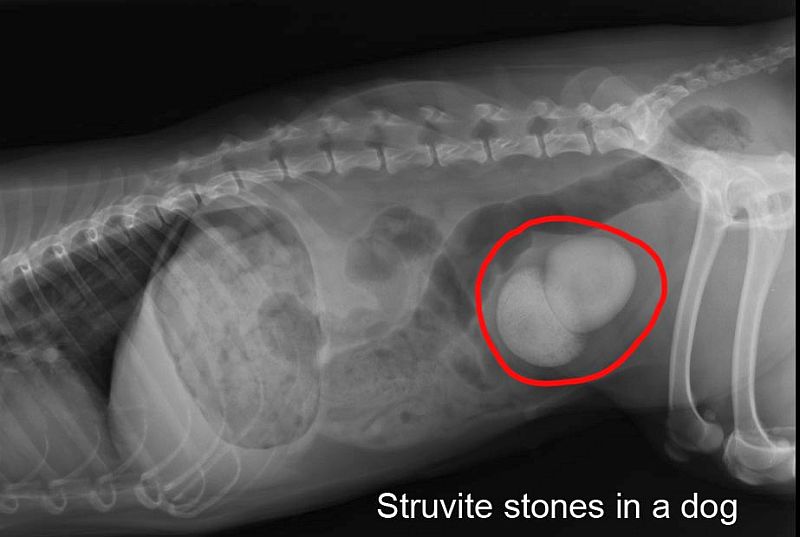
The Problem: Bladder stones are painful build-ups of minerals that reside in the bladder. Dogs with bladder stones may be seen straining to urinate or have blood in the urine. This condition can be potentially life-threatening if your dog’s urine is blocked, so it’s essential to head to your local animal hospital as soon as you suspect that this may be the issue (plus, it’ll likely be crazy painful for her).
Possible Treatments: Bladder stones can share a lot of the same symptoms of more common bladder infections, which is why it’s so important to receive a proper diagnosis. Your veterinarian can identify bladder stones using an X-ray or an ultrasound.
If the stones are fairly small, your veterinarian may be able to flush them out with a non-surgical method called urohydropropulsion. Surgical removal via a cystotomy is necessary for larger stones, though luckily the operation has a fairly quick recovery time.
Moving forward, your vet may adjust your dog’s diet or prescribe medications to help prevent bladder stones from developing in the future.
5. Diabetes
The Problem: Dogs with diabetes tend to exhibit increased thirst. This causes them to drink more water, which in turn means they have to urinate more often. And this may occasionally lead to accidents — including during the night.
A few other symptoms associated with diabetes to watch for include your dog having bad breath, lethargy, and weight fluctuations. Dogs may be more likely to develop diabetes based on factors such as their breed, genetic history, and obesity.
Possible Treatments: Your veterinarian can test for diabetes by checking glucose levels in your dog’s blood and urine. Once diagnosed, pet parents will need to provide their pups with a daily insulin shot to keep the condition under control. Affected dogs may also require a modified diet and exercise routine.
6. Kidney Disease
The Problem: Chronic kidney disease can cause extreme thirst, leading to a frequently full bladder, and incontinence. Your dog may also experience lethargy, bad breath, ulcers, vomiting, and diarrhea if she’s suffering from kidney disease.
This condition is typically seen only in older dogs, since a majority of the kidneys must usually be dysfunctional before any clinical symptoms are seen.
Possible Treatments: Chronic kidney disease is diagnosed through urine and blood testing. The prognosis and treatment depends on the state of your dog’s kidneys. Your veterinarian may recommend certain medications, a diet change, or regular home fluid therapy to keep your canine as comfortable as possible.
7. Neutering or Spaying
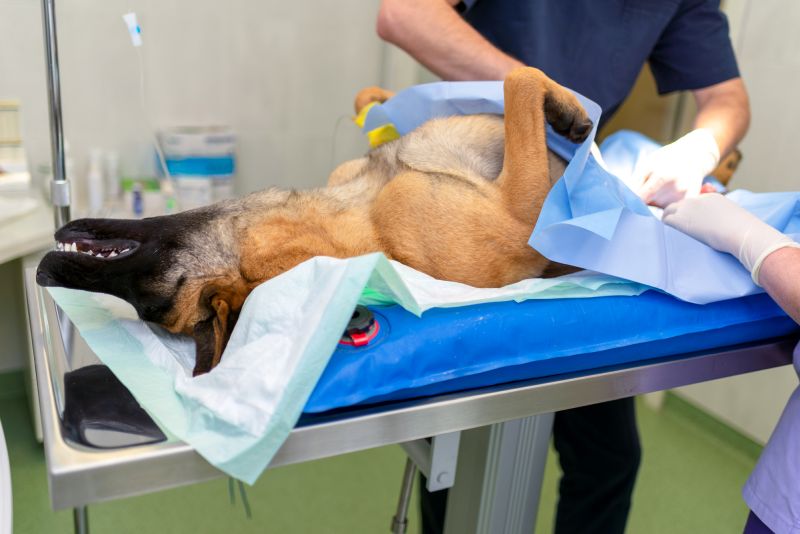
The Problem: Unfortunately, incontinence is occasionally a downside of spaying and neutering dogs. It obviously doesn’t always happen, but it is a risk owners must consider.
The removal of the testicles or ovaries during the neuter and spay processes leads to decreased estrogen and testosterone levels. These hormones provide assistance to the muscles related to bladder control. Therefore, when the hormones are at an imbalance, incontinence can occur.
Possible Treatments: If your vet suspects that your pup’s levels are low, he or she may recommend taking a synthetic form of estrogen, like diethylstilbestrol. Your dog might also need phenylpropanolamine, which is a medication that increases muscle tone in the urinary tract.
8. Bladder Contractions
The Problem: In some cases, your dog’s bladder may contract frequently, leading to small amounts of urine leakage. This bladder storage dysfunction can be traced back to other underlying issues like genetic predisposition, anatomic defects, or weakened muscles.
Possible Treatments: Bladder contractions may be caused by a variety of factors, including hormonal imbalance or underlying disease. Therefore, your veterinarian will take into account your dog’s medical history to determine the best course of action in terms of testing and treatment. Your dog will likely be prescribed medication to help strengthen the muscles associated with bladder control.
9. Abnormal Anatomy
The Problem: It’s possible that your dog has a congenital defect that is leading to poor bladder control. She could also experience bladder issues because her anatomy was damaged due to an injury. Some of the more common conditions that may cause urinary incontinence include ectopic ureters (ureters connecting directly to the urethra instead of the bladder), urethral hypoplasia (improper development of the opening of the urethra), and abnormalities associated with the vulva.
Possible Treatments: If your dog’s anatomy can be corrected through surgical intervention, your veterinarian may recommend a laser procedure or open abdominal surgery to correct the affected area. Phenylpropanolamine and other medications may also be prescribed to help decrease your dog’s incontinence.
10. Urine Retention
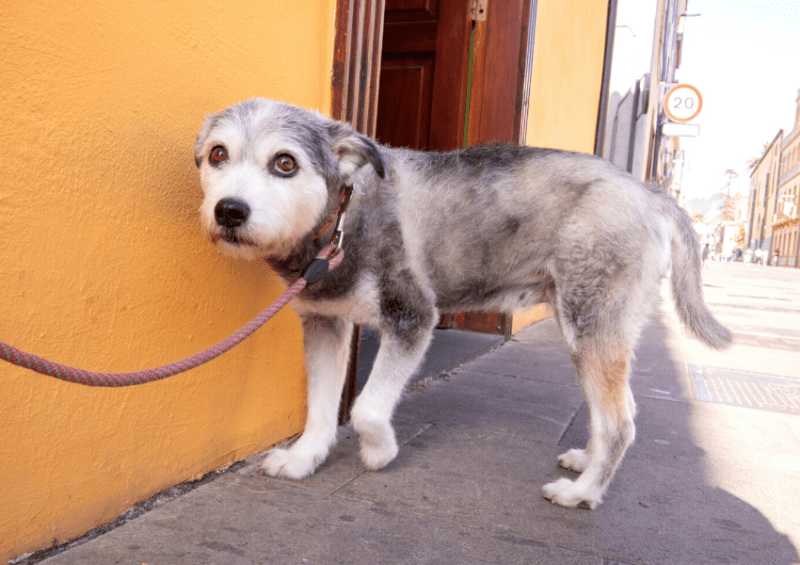
The Problem: Some dogs will not urinate because they are experiencing stress, fear, or other behavior issues. But your pooch can only “hold it” for so long! So, accidents may occur when your pooch simply cannot control her bladder any longer, leading to leakage while your sweetie sleeps.
Possible Treatments: Your veterinarian will likely have your dog undergo CT scans, urine, and blood testing to rule out any disease or neurological cause. If there’s no underlying cause, it may be a matter of adapting your lifestyle to help manage your mutt’s symptoms. It’s possible that a certified dog behavior consultant may be able to help your dog build confidence to eliminate properly on a more regular basis, but this won’t work in all cases.
11. Brain Diseases
The Problem: Neurological diseases can also cause urinary incontinence. This could include brain diseases, lesions, spinal issues, or disruption of the nerves that help regulate the bladder. One of the most common brain issues that causes incontinence is canine cognitive dysfunction (CCD), which is essentially doggie dementia. Dogs with neurological issues may also experience fecal incontinence as well.
Possible Treatments: Issues in the brain are primarily identified using a CT or MRI scan. Your veterinarian will need to rule out all possible causes, so your furry friend is likely to undergo blood and urine testing as well. The treatment outlook depends heavily on your hound’s specific diagnosis. In some cases, only medical management will be possible for affected dogs.
Maybe It’s Not Medical: Overnight Accidents & Dog Management
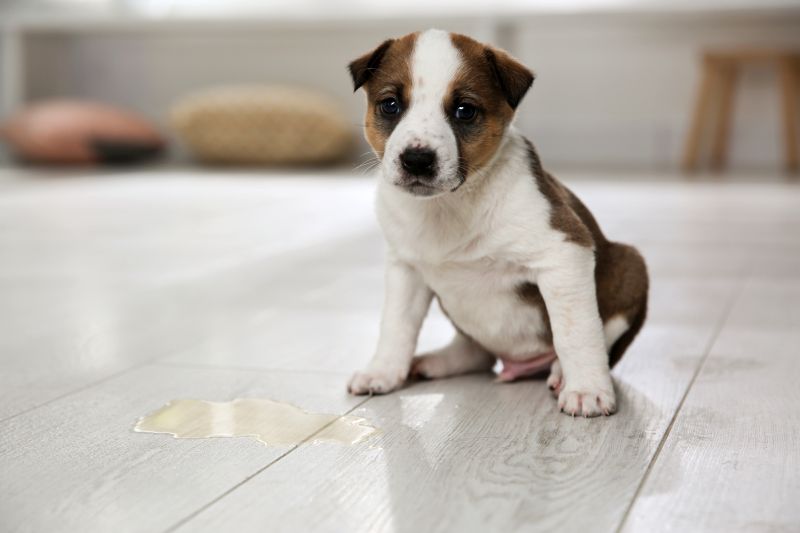
It’s important to create a distinction between incontinence and dogs who just have bladder management issues.
Incontinence is involuntary, meaning that your furry friend isn’t able to control her bladder or have enough time to alert you that she needs to go. Conversely, dogs with bladder management issues can control their bladders — they just choose to go in inappropriate places (though sometimes the term “choice” may not apply, such as when your little wagger just can’t hold a full bladder any longer).
If your pooch is whining throughout the night or pacing near the door before having an accident, it may just be a sign that she needs to go out more often, rather than a medical concern like incontinence.
Your pooch might also still be working through the housetraining process — puppies have to pee a lot! Keep in mind that puppies can generally hold their bladder one hour for every month of age. At three months, she will usually need to be taken out every three hours to avoid an accident.
Adult dogs should still be taken out every couple of hours to keep them comfortable and avoid accidents. Most adult dogs can hold their bladder for around 6 hours (and sometimes much longer), but there are a number of factors that may affect that hold time.
For instance, small dogs can’t hold it as long as larger dogs can. Older dogs might also have a more difficult time controlling their bladders. Make sure your pooch is getting a final potty break before bed time and plenty of walks throughout the day to help avoid overnight accidents.
Coping with Canine Incontinence: Implement Management Solutions
While you obviously need to work with your vet to get to the bottom of your pup’s nighttime pee-pee problem, that doesn’t mean you just have to deal with a wet dog bed every morning. Instead, you can implement some management solutions for older incontinent dogs to help reduce messes, or at least, make them easier to clean up.
This includes doing things like:
- Picking up a waterproof dog bed, which won’t absorb your dog’s urine (you could even purchase a bed designed specifically for incontinent dogs).
- Purchase some doggie diapers to help keep your pet’s bed dry. And if you don’t want to buy some, you can actually make DIY dog diapers yourself.
- If you’re dealing with a male dog who’s having accidents, you may want to fit him with a dog belly band to keep him dry at night.
In addition to these things, you may want to pick up a carpet cleaner for dog urine, a pet-safe carpet deodorizer or a pet-safe floor cleaner, if you have tile, wood, or linoleum floors. These products won’t only help keep your home smelling fresh, but they’ll also help prevent the kinds of ongoing accidents lingering pee-pee odors sometimes cause.
Practice Patience With Your Pooch
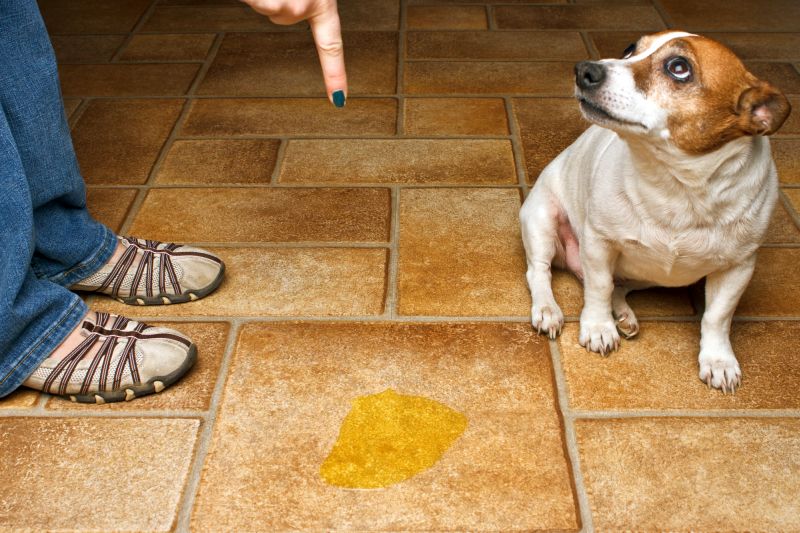
While urinary incontinence is undoubtedly a difficult issue to deal with as a pet parent, remember to avoid taking out your frustrations on your furry friend. After all, it isn’t something your canine companion can control.
As painstaking as it is to constantly clean up after your dog, hang in there!
It’s a good idea to notate whenever your furry friend wets the bed to provide your veterinarian with the most thorough depiction of your pooch’s predicament. Commit to the treatment plan provided by your veterinarian and be sure to take note of anything out of the ordinary.
***
Urinary incontinence can be incredibly challenging for you and your canine companion. Hopefully, this article brings you one step closer to finding a solution for your sweetheart. With the help of your veterinarian, you’ll be able to make your canine more comfortable in no time at all.
Does your dog suffer from incontinence? What has worked for you? We’d love to hear all about it in the comments below!
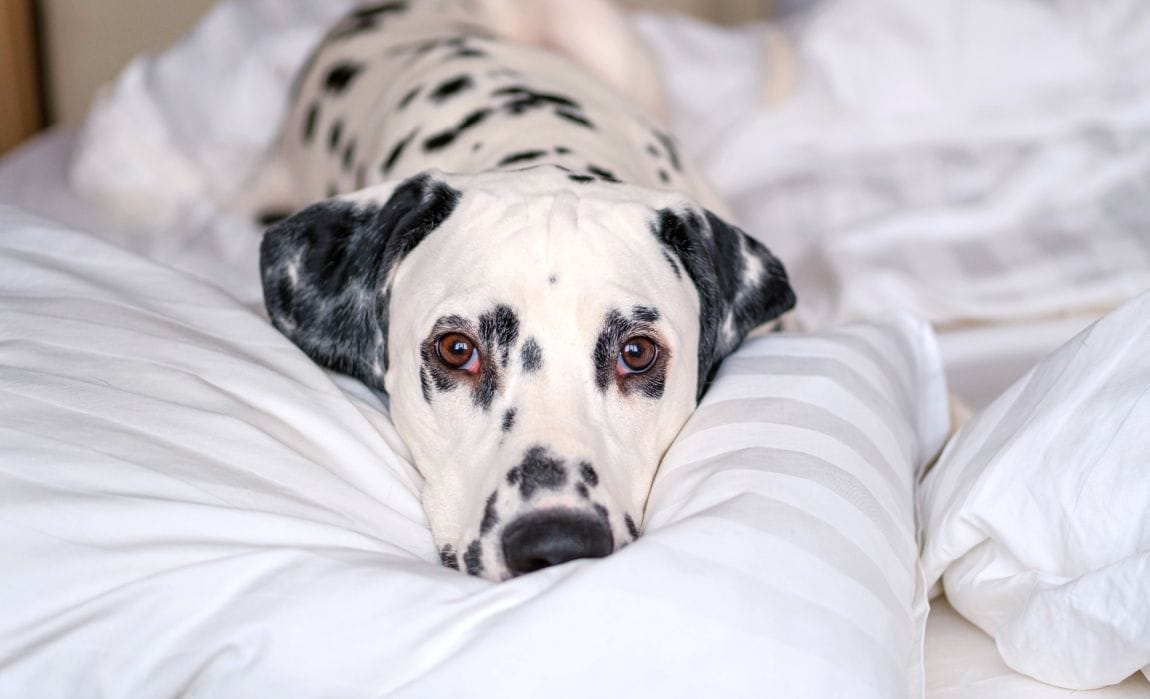


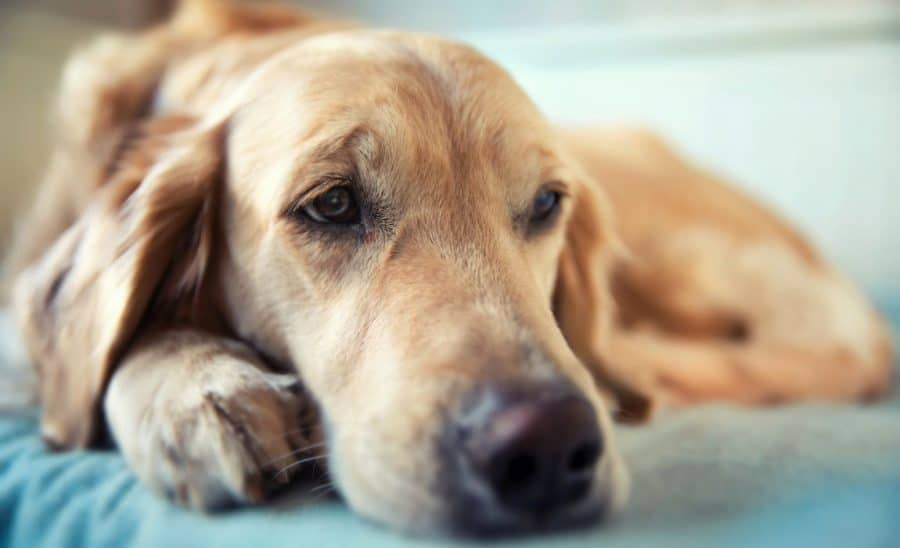


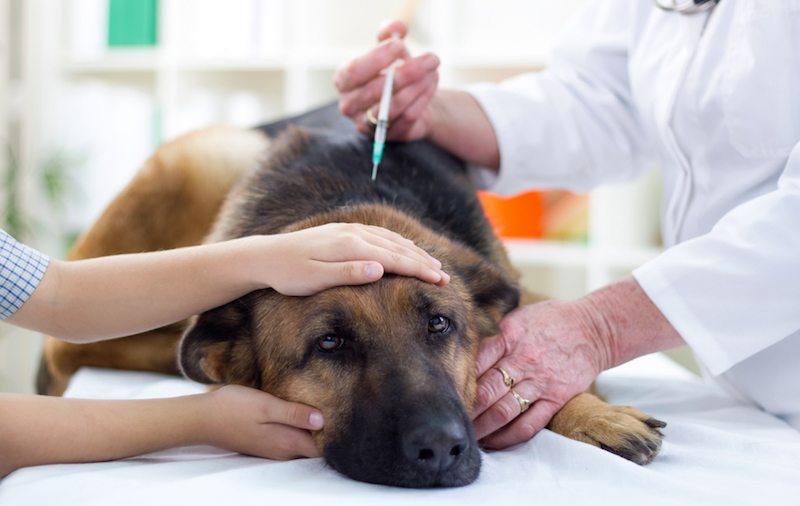
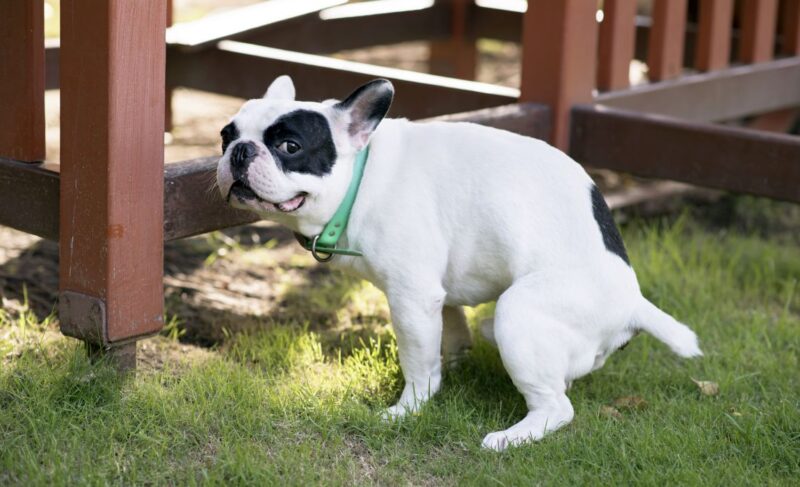
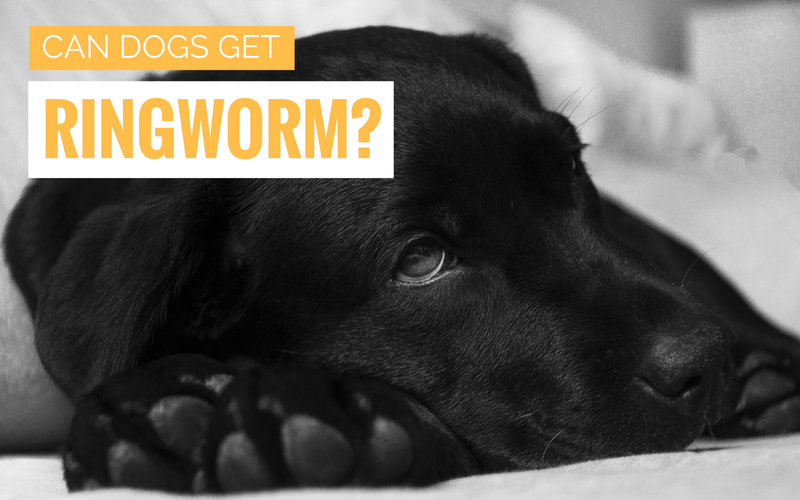
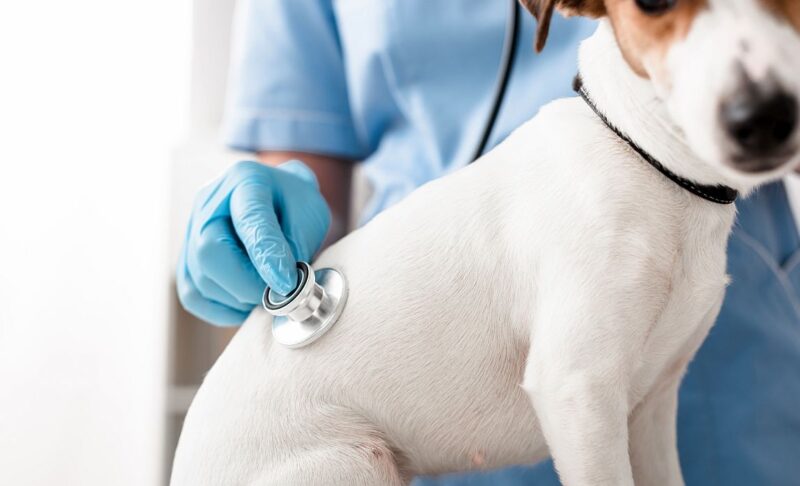
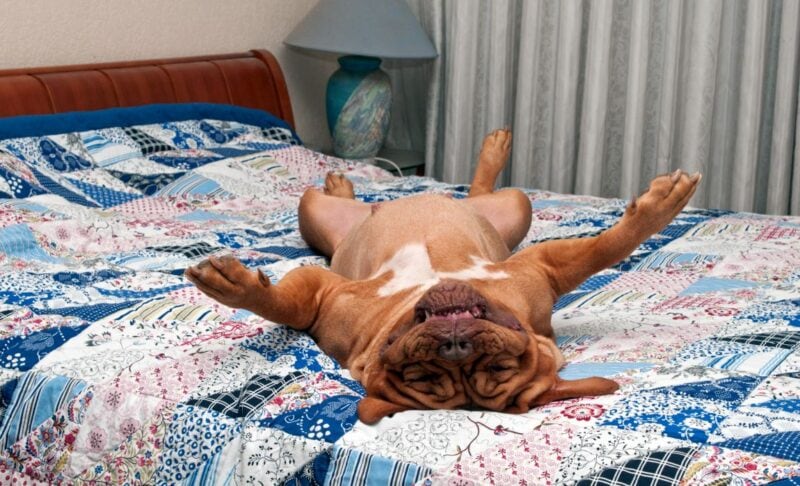
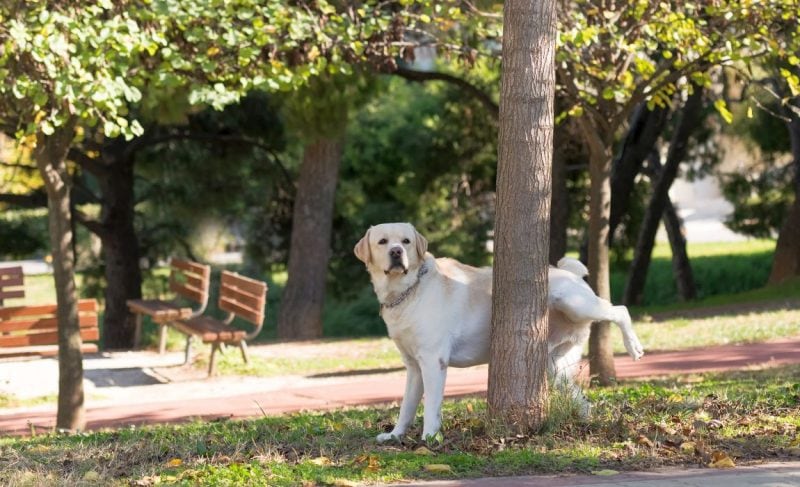
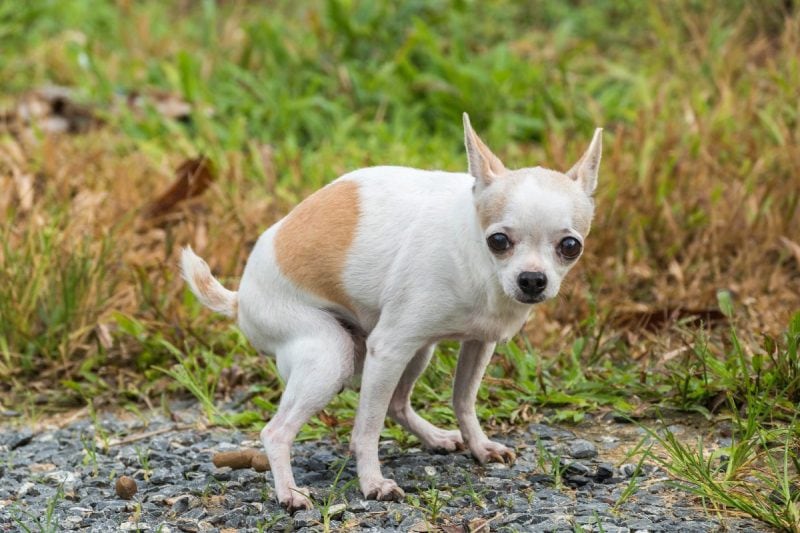

Leave a Comment